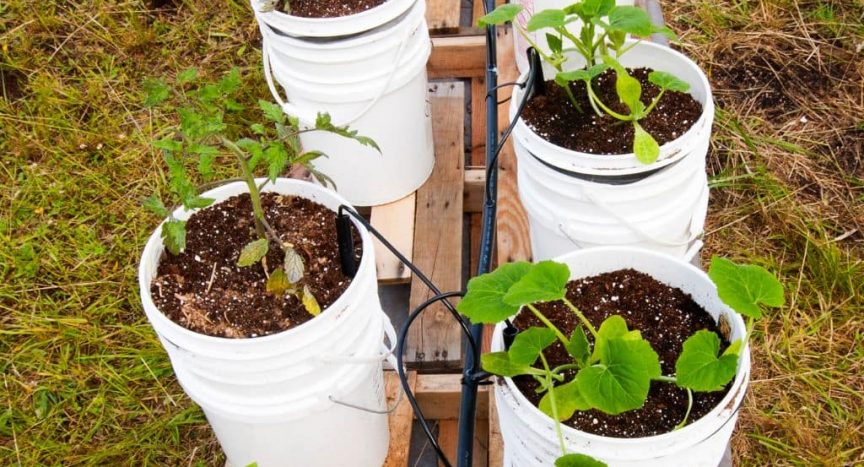While permaculture often focuses on designing and implementing systems on a larger scale, the principles can certainly be applied to smaller-scale projects like bucket gardening. Here's how bucket gardening aligns with some permaculture principles:
- Observe and interact: Bucket gardening requires careful observation of your plants and their needs, adapting to their requirements for water, sunlight and nutrients, which is consistent with the permaculture principle of observing and interacting with the natural environment to make informed decisions.
- Capture and store energy: By placing the buckets in optimal locations to catch the sun's rays, you are effectively conserving solar energy in the plants. Additionally, using buckets to grow food can reduce the energy needed to transport food from farm to table.
- Use and evaluate renewable resources: Buckets can be reused and reused, which is in line with the principle of valuing renewable resources and services. The use of organic soil, compost and natural fertilizers in bucket gardening also reflects this principle.
- You do not produce waste: Bucket gardening can contribute to a zero-waste system by composting plant debris and recycling or reusing buckets and other materials.
- Design from models in detail: Starting with the overall goal of creating a sustainable garden, bucket gardening allows for detailed planning in terms of plant selection, spacing, and companion planting within the confines of each bucket.
- Integrate rather than separate: In a bucket garden, different plants can be grown together in separate buckets but within the same space, promoting biodiversity and beneficial plant interactions.
- Use small and slow solutions: Bucket gardening is a small-scale, manageable approach to growing food that is particularly suitable for beginners or those with limited space, reflecting the principle of starting small and building from there.
While bucket gardening on its own may not encompass all aspects of a permaculture system, it can certainly be part of a larger permaculture design or serve as a stepping stone to more integrated permaculture practices.







